Kombucha Kit FAQs
If you're like us when we first started getting into kombucha, you might have a ton of questions regarding the delicious drink. We've compiled a bunch of frequently asked questions regarding kombucha so that you can be more confident in your brewing.
Take me back to the kombucha kit!
Tea Questions
Can I use other kinds of teas instead of just black tea?
Can I use other kinds of sugar instead of just white sugar?
Does kombucha dehydrate you?
Does kombucha contain caffeine?
Which is better for kombucha: tea bags or loose leaf tea?
I've heard of Jun tea...can I make that with this kit?
What kind of tea blends and tea measurements do you have?
How much room should there be between the sweet tea and the top of the jar?
Flavoring
What can I use for flavoring?
How do I flavor my kombucha?
How do I carbonate my kombucha?
What are some good flavoring additions for kombucha?
Oops! I flavored the kombucha in the jar with the SCOBY. What do I do?
SCOBY Questions
What is the SCOBY actually doing?
My SCOBY sank to the bottom. Is that bad?
There's weird brown and white stuff growing on the SCOBY. Help!?
There are strange bubbles forming in the SCOBY. Is this bad?
Can I pick up the SCOBY with my bare hands?
Why does the tea have to be between 68F and 85F before adding the SCOBY?
What is a "baby" and "mother" SCOBY?
My SCOBY came delivered in two pieces. Will it not work?
How and when do I "clean" my SCOBY?
Brown strands are overtaking my jar...help!
When do I know if there are too many SCOBY layers in the jar?
Keeping Things Clean
Will the metal lid or anything else metal hurt the kombucha?
Why do I need to boil the water?
Why do I have to use white vinegar to clean instead of soap?
Why do you dab the outside of the cloth with vinegar?
Should I use the metal ring or the kombucha band to secure the cloth?
Other Questions
Are there health benefits associated with kombucha?
What is a good serving size for kombucha?
I didn't see any fermentation or bubbling. Did it not work?
How much alcohol is in kombucha?
Do I have to dump that much sugar in? Is kombucha unhealthy?
Should I taste the kombucha before bottling?
Is leaving kombucha bottled in the fridge too long bad?
It's been a few weeks and my kombucha doesn't taste quite right. What do I do?
What happens if my home is very cold or very warm?
How do I take a pH reading without the SCOBY in the way?
My pH went below 2.5. Is my kombucha still drinkable?
After pouring out the kombucha from the jar, do I put the inner metal lid back on?
What can I use for flavoring?
The great thing about kombucha is that you can use tons of different fruits, flowers and spices to flavor your homemade brew. The most popular flavorings are ginger, honey (never raw honey), lavender, and a plethora of fruit purees.
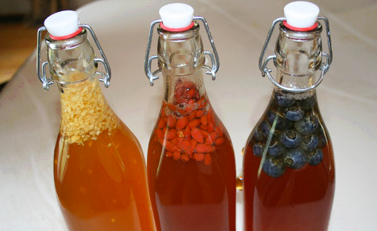
How do I flavor my kombucha?
Flavoring your kombucha is actually pretty easy! First, add your flavorings directly to the swing-top bottles, then keep your kombucha bottled at room temperature for 1-2 days. Next, quickly burp (open the cap then close it) the bottle, and refrigerate until you're ready to drink it. Make sure to fill halfway up the bottle neck and add one of the following for any 12-16oz. bottle:
- ½ - 1 teaspoon of honey.
- One tablespoon of freshly minced ginger.
- 5-10 petals/leaves of lavender or other flowers/herbs.
- ½ - 1 teaspoon of fruit puree.
- 1 -2 teaspoons of minced hot pepper
Remember that a small amount of these fruit purees can go a long way. Add just a half teaspoon to start, and if you need more after after a day or two, just add some more. Adding too much too soon may actually create enough carbon dioxide to break the bottle.
How do I carbonate my kombucha?
If you’re using any of the flavorings, there should be plenty of added carbonation at this point. If you aren't going to include any flavoring, add about ½ - 1 teaspoon of white or evaporated cane sugar to each bottle and create a tight seal with the cap. Keep the kombucha at room temperature for a 1-2 days and "burp" (opening the bottle for a second and then closing it) the bottle to make sure there isn’t too much stress on it. Refrigerate until you want to drink it.
What is the SCOBY actually doing?
The SCOBY is the star of your kombucha tea. Making the sweet tea lets the SCOBY begin to feast. It quickly converts the sugar into organic acids and vitamins, while simultaneously giving the tea a delicious and tangy flavor. Kombucha is also a probiotic which means in small doses, it may help improve your gut health.
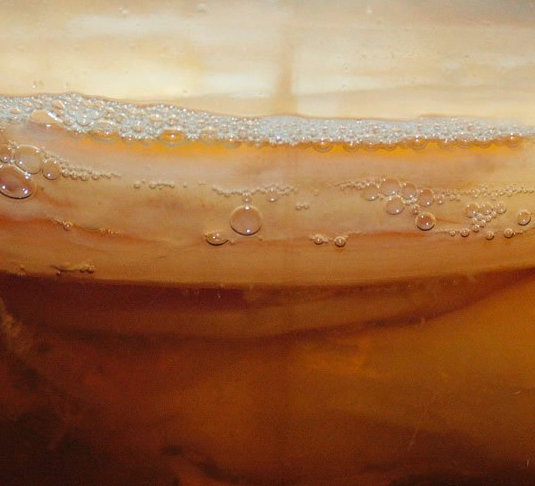
Can I use other kinds of teas instead of just black tea?
Yes, you can blend black tea with oolong, green and white teas. Black tea is most commonly used as it provides the robust kombucha flavor most commonly associated with the beverage. Blending with oolong and green gives the kombucha a lighter color, as well as a more herbal flavor. Brewing with white tea impacts an extremely light and delicate flavor to the kombucha. For your first few batches, we recommend using our blends, which are 1/3 black tea and 2/3 either oolong or green. But once you get comfortable brewing, go ahead and experiment!
Can I use other kinds of sugar instead of just white sugar?
Absolutely! Much like the different kinds of tea blends you can use, different sugar can impart varying sweetness in your kombucha. For the first few batches we recommend using either white table sugar, or if you’re looking for something unbleached, organic cane sugar. After that, you experiment with the following:
Turbinado, Muscovado and Demerara cane sugar
Molasses (1:1 ratio)
Honey (DO NOT USE RAW HONEY!) (7 honey:8 sugar)
Agave (1 agave:2 sugar)
Maple Syrup (1 maple syrup:2 sugar)
These different sugars will likely yield more sour brews, and will take a little more time to ferment. But this is your kombucha, so feel free to try new things!
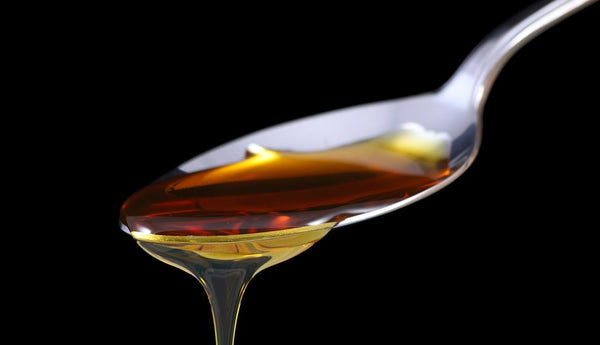
How much alcohol is in kombucha?
The SCOBY itself actually ends up eating most of the alcohol it creates. That said, there is often 0.5-1.0% alcohol by volume in the kombucha. There’s so little that you can drink it any time of day. There is also no detectable taste of alcohol in the drink.
Does kombucha contain caffeine?
A little bit. Post-fermentation the kombucha will typically retain about ⅓ of the caffeine from the tea post-fermentation. So while the drink won’t give you a buzz, drinking it throughout the day may yield more energy than drinking nothing at all.
Are there health benefits associated with kombucha?
Yes! Although some of the benefits are debated, the one undeniable fact is that kombucha is a probiotic, which can stabilize the gut flora that exists within your GI system. There also exists minute amounts of natural vitamins and minerals that are present after the fermentation process.
What is a good serving size for kombucha?
While you can drink as much kombucha as you feel works for you, if you’ve never had the drink before, begin by enjoying just a few ounces at a time. You may only need a few sips to start feeling great! After that, just listen to your body. Also remember that kombucha is acidic. Drinking water with the tea will help keep you hydrated, and keep your teeth healthy.
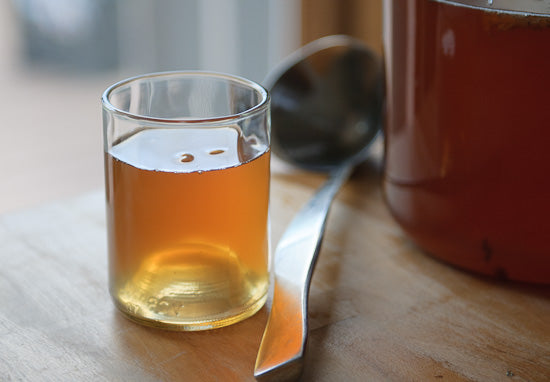
Does kombucha dehydrate you?
Not as much as other diuretics. However, after every few sips of kombucha, it’s good to have a few sips of water to keep yourself completely hydrated. If you drink more than a few sips, make sure to have a glass of water with your beverage. You can also dilute your kombucha in a glass of water. That way, you get the flavor and keep yourself hydrated!
I didn’t see any fermentation or bubbling. Did it not work?
Chances are it worked. Sometimes the fermentation process can be very quick or inconspicuous. The true test is to taste the drink or take a pH strip and see where the pH is. Anything between 3.5 and 2.5 pH is going to be delicious. Higher than 3.5, it may be too sweet, and lower than 2.5 it may be too tart and vinegary.
My SCOBY sank to the bottom. Is that bad?
That’s not bad at all! The SCOBY mother can be at either the top or bottom of the fermentation jar. If it does sink to the bottom, there may be slightly less natural carbonation from the SCOBY, but the taste will be just the same.
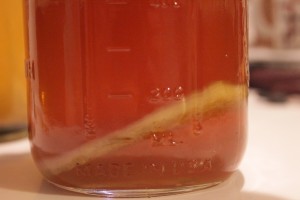
There’s weird brown and white stuff growing on the SCOBY. Help!?!
No worries at all. If there’s creamy white looking stuff around the SCOBY, there’s no need to worry. That’s likely a new baby SCOBY forming! If you keep it healthy, pretty soon you’ll have two large SCOBYs to brew two batches of kombucha tea at once. If there’s any brown material on the SCOBY, so long as it isn’t fuzzy, you should be fine. That’s likely the yeast component growing around the SCOBY. The mold you should be worried about would be fuzzy and growing on the top of the SCOBY out of the water.
There are strange bubbles forming in the SCOBY. Is this bad?
Bubbles are actually good. It means that natural carbonation is building up in the tea under the SCOBY. Don't worry about these! You may see these bubbles come and go throughout the fermentation process.
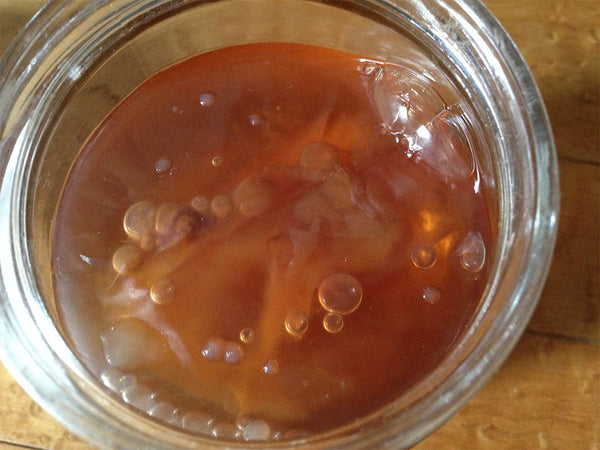
Which is better for kombucha: tea bags or loose leaf tea?
Either work. We like to use loose leaf tea as it gives up a lot of great flavors without being too bitter. However, you can use tea bags if you’d like! 3-5 tea bags should do it for a half gallon of kombucha.
What are some good flavoring additions for kombucha?
Well, the main rule is to always follow your personal taste! However, a few of our favorites are as follows:
- Tropical Paradise - 1/4 teaspoon each of strawberry puree and mango puree.
- Ginger Lime - 1/2 teaspoon of lime juice and several small cubes of fresh ginger.
- Lavender Mint - Several crushed lavender petals and several crushed mint leaves.
- Citrus Blast - 1/4 teaspoon each of grapefruit, orange and pineapple purees.
- Mint "Lemonade" - Several crushed mint leaves and 1/2 teaspoon of lemon juice.
- Blueberry Blast - 1/4 teaspoon of honey (not raw) and 4-6 pureed blueberries.
I’ve heard of Jun tea...can I make Jun tea with this kit?
Jun tea requires a different “Jun” SCOBY to ferment. Whereas kombucha is best using black tea and cane/white sugar, jun is made with honey and green tea, creating a more delicate, earthy fermented drink. If you're interested in brewing jun tea, head over to our friends at Fermentaholics.com to purchase a specific Jun SCOBY.
My SCOBY came delivered in two pieces. Will it not work?
SCOBYs are insanely resilient. Chances are your kombucha will still brew perfectly. Add the halved SCOBY to the tea, and give it a few extra days to ferment. You should see the bacteria and yeast begin to multiply, and the kombucha should still taste great. If there are any issues after you attempt brewing, please send us an email so we can help troubleshoot and fix the issue.
Will the metal lid or anything else metal hurt the kombucha?
The inner part of the metal lid will not be used, so that will not be a factor. The outer part of the lid will not harm your kombucha or SCOBY so long as you do not have them come in contact with one another. If the liquid or SCOBY never touches, you will be okay! Using a metal strainer or funnel to bottle your kombucha is also okay.
Why do I need to boil the water?
If you use tap water for your kombucha, there is likely some chlorine in the water which can be fatal to the health of your SCOBY. Boiling the water for 5 minutes gets rid of most of the chlorine. If you use a charcoal filter to filter your water, that should remove the chlorine from your water. If your water contains chloramines or any other chlorine derivatives, the best bet is to purchase spring water and use that instead.
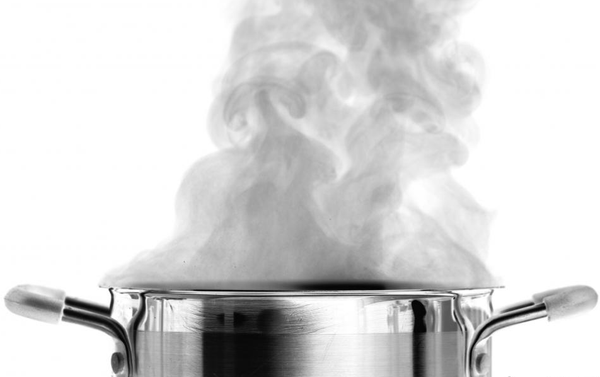
Why do I have to use white vinegar to clean instead of soap?
Soap is excellent at killing bacteria, which means were it to come in contact with the good bacteria of the SCOBY, the soap would quickly destroy it. Because of that, we use vinegar. Vinegar is excellent at preventing harmful bacteria and fungus (like mold) from growing in your kombucha or on the SCOBY itself. After all, kombucha and vinegar have a lot in common.
What kind of tea blends and tea measurements do you have?
We generally use a 1:2 ratio for our tea blends, using 1 part black tea and 2 parts either green or oolong. Currently, we have three different kombucha teas in the kit that make 3 half-gallon batches of kombucha. One that is a straight black tea, and the others that are a black and oolong and black and green. We're also currently experimenting with more tea types, so if you have any suggestions we'd love to hear them!
Do I have to dump that much sugar in? Is kombucha unhealthy?
Nearly all of the sugar you add to the tea ends up being eaten by the bacteria and yeast, forming the tart flavor we all love. Though it seems counterintuitive, adding a lot of sugar allows the SCOBY to remain healthy and make a great tasting kombucha. The end result is a healthy probiotic that contains almost no sugar.
Can I pick up the SCOBY with my bare hands?
During fermentation, try not to touch or remove the SCOBY if you can. Before and after, touching and handling the SCOBY is completely alright to do. Just make sure you wash your hands with a little bit of white vinegar before handling. When your SCOBY begins growing another layer, or "baby", you may need to handle the SCOBY and peel the layers apart. Once you do this, you can place the baby in another jar (with some starter liquid) and begin brewing two batches at once!
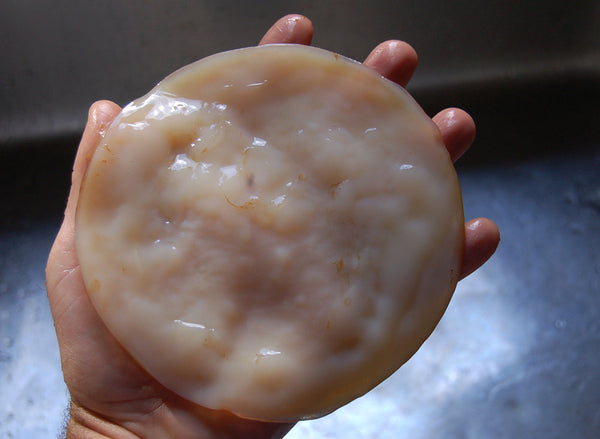
Why does the tea have to be between 68F and 85F before adding the SCOBY?
If your SCOBY sits in tea colder than 68F, there is a much higher likelihood it may grow mold, or go dormant. If placed in tea warmer than 85F, the bacteria and yeast colonies will quickly collapse and die. Never add your SCOBY to teas outside this temperature range. As well, make sure to keep your ambient room temperature between these two extremes for the same reasons.
Why do you dab the outside of the cloth with vinegar?
Vinegar is an excellent way to prevent bad fungus and bacteria from infecting your kombucha without harming your SCOBY. Dabbing some on the cloth will help prevent those nasties from entering your kombucha tea from the air outside the jar.
Should I taste the kombucha before bottling?
Absolutely. While pH strips can tell you when the kombucha is acidic enough, tasting it will tell you when you have the right flavor. After 7 days, the kombucha will still be a little sweet, but tart, and will become more acidic over time. With a straw, begin tasting the kombucha after 7 days (or when the pH reaches 3.5) to determine when it's ready to bottle. There is no right or wrong here, it's all up to you!
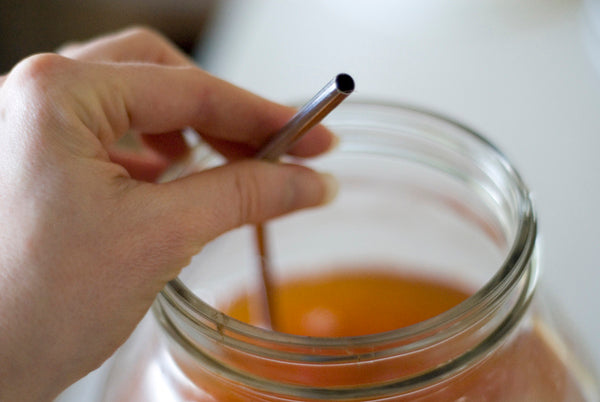
What is a "baby" and a "mother" SCOBY?
This is just kombucha talk. The mother is the main SCOBY that you start off with in your initial batch. Over time, the mother SCOBY will generate a "baby" SCOBY which can sometimes be attached or not attached to the mother. This is completely normal, and shows a very healthy environment! If you'd like, once the baby is about as big as the mother, carefully place the baby in another jar with some starter liquid. You now have a two batch system going!
Is leaving kombucha bottled in the fridge too long bad?
Over time in the fridge the kombucha will become more acidic and slightly more vinegary. Though some kombucha may last a long time without much change, it's often best to enjoy your kombucha within 1-2 weeks after bottling. If you let your kombucha become too vinegary, you can always use it in a salad dressing, or even as an effective and natural surface cleaner.
How and when do I "clean" my SCOBY?
As your first SCOBY becomes more mature, you'll slowly see new SCOBYs form, and the old SCOBY potentially become a little strange looking. The times to clean your SCOBY are either when it appears the Yeast portion (the brown strands) begin overtaking the jar, or when there are more than two SCOBY layers in the jar. When cleaning the yeast, wash your hands with vinegar, and gently remove some of the yeast strands until it looks in balance with the white portion of the SCOBY. When removing a full SCOBY layer, vinegar up your hands, and carefully peel off the bottommost layer of the SCOBY culture. You can take the culture out of the liquid for a bit if it is easier to do so. After
When do I know if there are too many SCOBY layers in the jar?
With our sized jar (half-gallon) it's okay to have two layers of SCOBY in the jar at any given time. Once it jumps to 3, it's time to trim. When removing a full SCOBY layer, vinegar up your hands, and carefully peel off the bottommost layer of the SCOBY culture. You can take the culture out of the liquid for a bit if it is easier to do so. Afterwards, you can either start a new kombucha setup with another jar, or use the SCOBY to make vegan jerky, add it to your compost, and other awesome stuff!
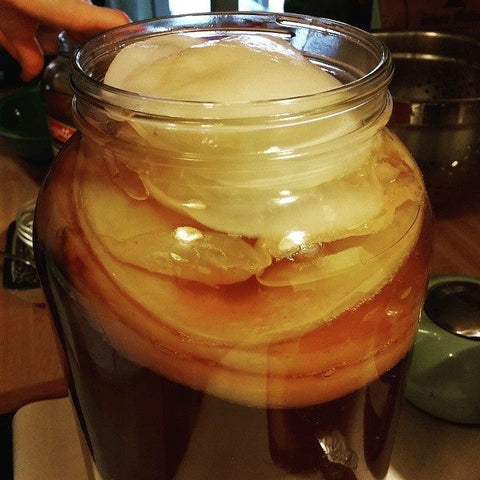
It's been a few weeks and my kombucha still doesn't taste quite right. What should I do?
Sometimes your kombucha doesn't end up tasting right...and that's okay! It only take another week and a buck or two to make another batch. If your kombucha tea doesn't taste quite right, so through these questions to try and pinpoint the issue:
- Were there any issues on brew day?
- Did I use enough sugar?
- Was the SCOBY looking healthy during fermentation?
- Is there a balance of the white part of the SCOBY vs. the yeasty brown portion, or is the yeast portion taking over?
- Was the temperature within 68-85F during fermentation?
- Is the pH between 2.5 and 3.5?
- Was your SCOBY fermenting in an area that smelled off, or had strong odors?
9/10 most issues fall into those bullets. Consult your instructions or the other FAQs here to find out how to avoid these pitfalls in the future!
Oops! I flavored the kombucha in the jar with the SCOBY. What do I do?
Not to worry, your SCOBY is resilient and will likely survive this. That said, make sure you remove the flavorings from the jar immediately. What this will do, is it will likely taint your future batches with the flavor you've imparted on the SCOBY. However, it may not taste great in the future batches, as the flavor may be warped by the SCOBYs natural fermentation process. The good thing is that over time, this flavor will slowly leech out of the SCOBY, and it should go back to normal after a few batches.
Brown strands are overtaking my jar...help!
No worries! This is an easily solvable problem. First, wash your hands with vinegar. Next, carefully remove some (not all) of the excess brown strands overtaking your brew and discard them. Keeping this balance will be important to the health of your brew!
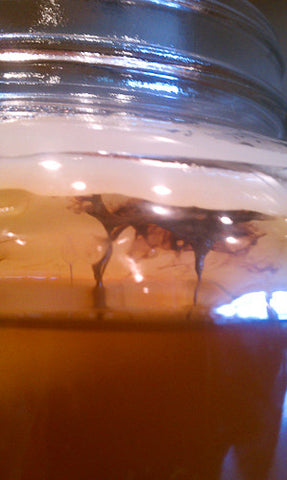
My kombucha has some noticeable off flavors. What happened?
Depending on where you left your kombucha, it may have picked up some unsavory flavors during fermentation. This may be because of some of the issues spoke of in this FAQ, but it may also be due to the conditions surrounding your kombucha. For example, if you leave your fermenter in the kitchen and cook with a lot of garlic, there's a good chance the brew and the SCOBY may be tainted with a garlicky flavor. If you place your kombucha fermenter in a place that often smells strange (think mudroom or musty basement), you may get these off flavors in the brew. While they will likely dissipate after a few batches, it's best to avoid these issues at the start. Make sure to place your jar in a neutral smelling location moving forward.
What happens if my home is very cold or very warm?
Definitely try to keep your kombucha between 68-85F at all times!
If you home is too cold, you may see the following:
- Mold form on the SCOBY
- The kombucha brew much slower
- Off flavors form in your beer
- A lack of symbiosis between the yeast strands and bacteria
If your home is too warm, you may see the following:
- The SCOBY culture die
- A lack of symbiosis between the yeast strands and bacteria
- Bottled kombucha exploding when not refrigerated
How do I take a pH reading without the SCOBY in the way?
The best way to get an accurate pH reading is to ladle out (using a ladle sanitized with vinegar) some kombucha, and dunk the strip into that. This way you get kombucha that wasn't super close to the SCOBY, but is still acidic.
Should I use the metal ring or the kombucha band to secure the cloth?
Either are fine! We like to use whatever is on hand. Definitely try out the kombucha band first, and if you like it, go with that. If you don't the metal lid will work just as well. Just make sure the metal lid does not come in contact with the SCOBY. As well, make sure that the lid threads with the jar, even if the cloth is in the way.
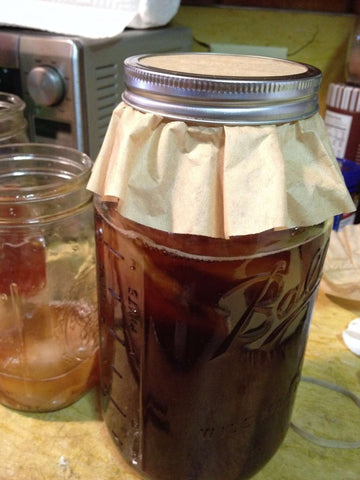
How much room should there be between the sweet tea and the top of the jar?
We like to leave at least 1-2 inches of space. That way there is room for both the current SCOBY, and for the babies that will soon form afterwards. If you see the sweet tea come right up to the top of the jar, before adding the SCOBY, discard two inches to allow for room to grow.
My pH went past 2.5, is my kombucha still drinkable?
After 2.5, your kombucha is now more like kombucha vinegar. If the pH is right around 2.5 and you like the taste, go ahead and drink it! Maybe just drink a bit less to protect your teeth and stomach. If it's well below 2.5 and edging towards or below 2, save the kombucha vinegar to use as a household cleaner, an additive in salad dressings, a way to lower pH in your soil, and much more.
After pouring out the kombucha from the jar, do I put the inner metal lid back on?
Always let your culture breathe! After pouring the kombucha out of your fermenter, leave at least 1 cup of starter liquid in the jar along with the SCOBY. Afterwards, place the cloth back over the mouth of the jar, and either use the kombucha band, or the OUTER metal ring to hold the cloth in place. Do not use the inner metal lid at any point during the process, aside from transporting your fermenter short distances.
If you ever have any other kombucha questions that don't have answers here, feel free to email the top dog at [email protected]. We’re here to help!
